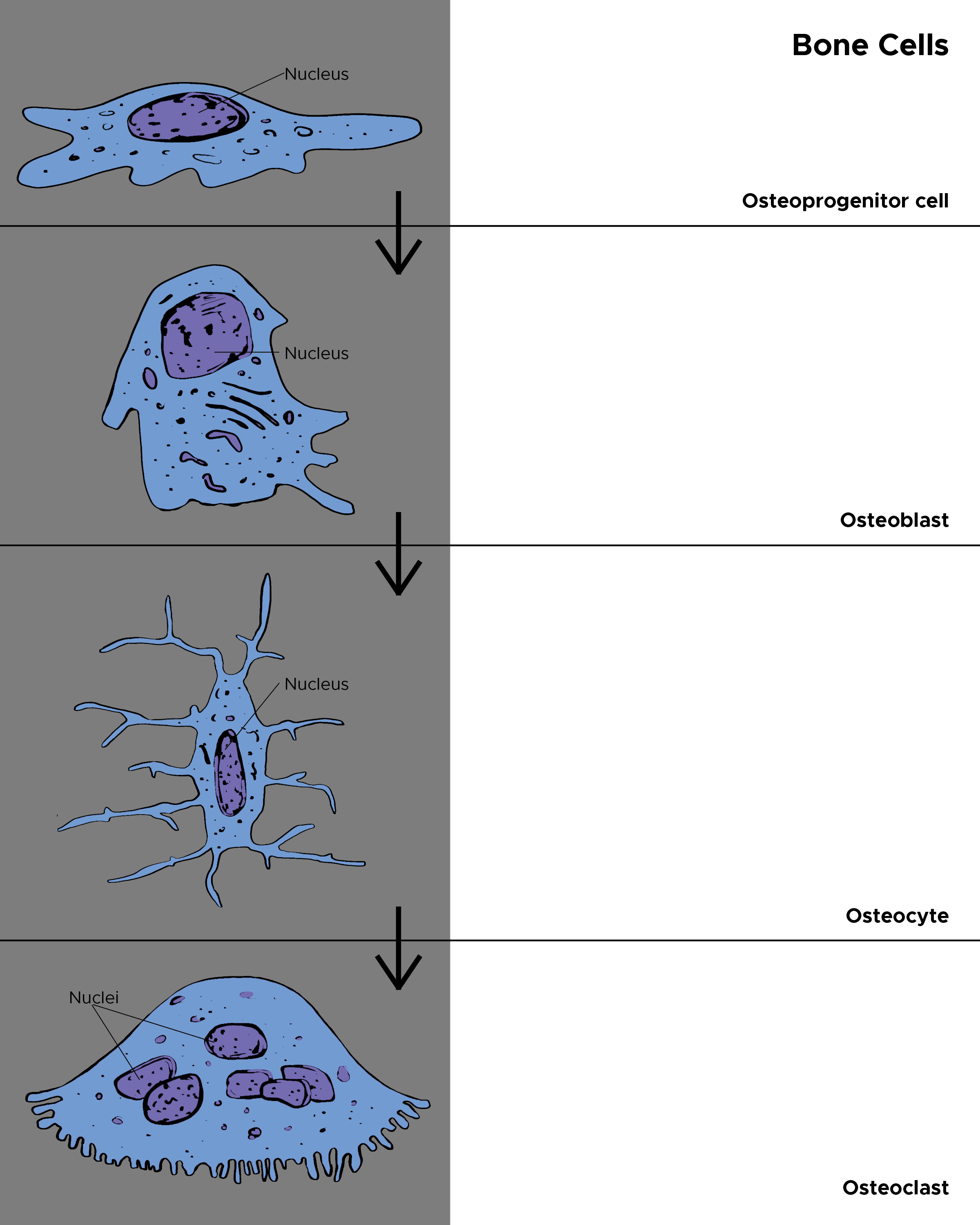[1]
Friedenstein AJ,Chailakhyan RK,Gerasimov UV, Bone marrow osteogenic stem cells: in vitro cultivation and transplantation in diffusion chambers. Cell and tissue kinetics. 1987 May
[PubMed PMID: 3690622]
[2]
Ren X,Zhou Q,Foulad D,Tiffany AS,Dewey MJ,Bischoff D,Miller TA,Reid RR,He TC,Yamaguchi DT,Harley BAC,Lee JC, Osteoprotegerin reduces osteoclast resorption activity without affecting osteogenesis on nanoparticulate mineralized collagen scaffolds. Science advances. 2019 Jun;
[PubMed PMID: 31206025]
Level 3 (low-level) evidence
[3]
Xu J,Wang Y,Hsu CY,Gao Y,Meyers CA,Chang L,Zhang L,Broderick K,Ding C,Peault B,Witwer K,James AW, Human perivascular stem cell-derived extracellular vesicles mediate bone repair. eLife. 2019 Sep 4;
[PubMed PMID: 31482845]
[4]
Clines GA, Prospects for osteoprogenitor stem cells in fracture repair and osteoporosis. Current opinion in organ transplantation. 2010 Feb;
[PubMed PMID: 19935065]
Level 3 (low-level) evidence
[5]
Ibrahim A,Bulstrode NW,Whitaker IS,Eastwood DM,Dunaway D,Ferretti P, Nanotechnology for Stimulating Osteoprogenitor Differentiation. The open orthopaedics journal. 2016;
[PubMed PMID: 28217210]
[6]
Lundberg P,Allison SJ,Lee NJ,Baldock PA,Brouard N,Rost S,Enriquez RF,Sainsbury A,Lamghari M,Simmons P,Eisman JA,Gardiner EM,Herzog H, Greater bone formation of Y2 knockout mice is associated with increased osteoprogenitor numbers and altered Y1 receptor expression. The Journal of biological chemistry. 2007 Jun 29
[PubMed PMID: 17491022]
[7]
Han S,Mistry A,Chang JS,Cunningham D,Griffor M,Bonnette PC,Wang H,Chrunyk BA,Aspnes GE,Walker DP,Brosius AD,Buckbinder L, Structural characterization of proline-rich tyrosine kinase 2 (PYK2) reveals a unique (DFG-out) conformation and enables inhibitor design. The Journal of biological chemistry. 2009 May 8
[PubMed PMID: 19244237]
[8]
Nakamura H,Yukita A,Ninomiya T,Hosoya A,Hiraga T,Ozawa H, Localization of Thy-1-positive cells in the perichondrium during endochondral ossification. The journal of histochemistry and cytochemistry : official journal of the Histochemistry Society. 2010 May;
[PubMed PMID: 20124093]
[9]
Jaquiéry C,Schaeren S,Farhadi J,Mainil-Varlet P,Kunz C,Zeilhofer HF,Heberer M,Martin I, In vitro osteogenic differentiation and in vivo bone-forming capacity of human isogenic jaw periosteal cells and bone marrow stromal cells. Annals of surgery. 2005 Dec;
[PubMed PMID: 16327496]
[10]
Dupree MA,Pollack SR,Levine EM,Laurencin CT, Fibroblast growth factor 2 induced proliferation in osteoblasts and bone marrow stromal cells: a whole cell model. Biophysical journal. 2006 Oct 15;
[PubMed PMID: 16861274]
[11]
San Miguel SM,Fatahi MR,Li H,Igwe JC,Aguila HL,Kalajzic I, Defining a visual marker of osteoprogenitor cells within the periodontium. Journal of periodontal research. 2010 Feb;
[PubMed PMID: 19453851]
[12]
Dhouskar S,Tamgadge S,Tamgadge A,Periera T,Mudaliar U,Pillai A, Comparison of Hematoxylin and Eosin Stain with Modified Gallego's Stain for Differentiating Mineralized Components in Ossifying Fibroma, Cemento-ossifying Fibroma, and Cementifying Fibroma. Journal of microscopy and ultrastructure. 2019 Jul-Sep;
[PubMed PMID: 31548923]
[14]
Sabharwal R, Gupta S, Sepolia S, Panigrahi R, Mohanty S, Subudhi SK, Kumar M. An Insight in to Paget's Disease of Bone. Nigerian journal of surgery : official publication of the Nigerian Surgical Research Society. 2014 Jan:20(1):9-15. doi: 10.4103/1117-6806.127098. Epub
[PubMed PMID: 24665195]
[15]
Cortini M,Baldini N,Avnet S, New Advances in the Study of Bone Tumors: A Lesson From the 3D Environment. Frontiers in physiology. 2019
[PubMed PMID: 31316395]
Level 3 (low-level) evidence
[16]
Poon Z,Lee WC,Guan G,Nyan LM,Lim CT,Han J,Van Vliet KJ, Bone marrow regeneration promoted by biophysically sorted osteoprogenitors from mesenchymal stromal cells. Stem cells translational medicine. 2015 Jan;
[PubMed PMID: 25411477]
[17]
Hutchings G,Moncrieff L,Dompe C,Janowicz K,Sibiak R,Bryja A,Jankowski M,Mozdziak P,Bukowska D,Antosik P,Shibli JA,Dyszkiewicz-Konwińska M,Bruska M,Kempisty B,Piotrowska-Kempisty H, Bone Regeneration, Reconstruction and Use of Osteogenic Cells; from Basic Knowledge, Animal Models to Clinical Trials. Journal of clinical medicine. 2020 Jan 4;
[PubMed PMID: 31947922]
Level 3 (low-level) evidence

